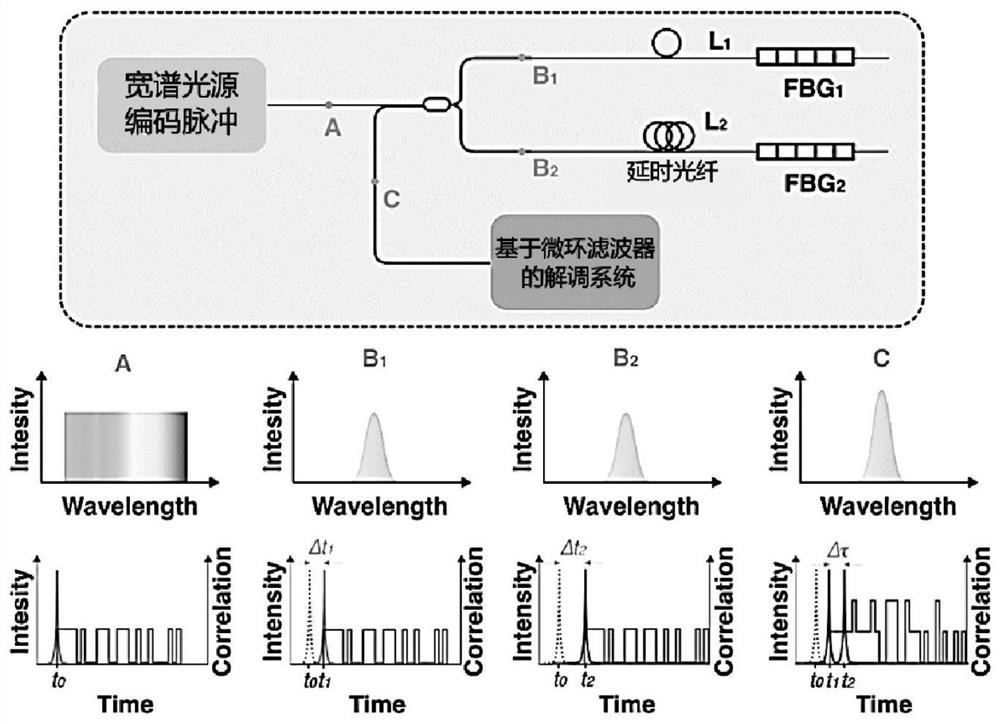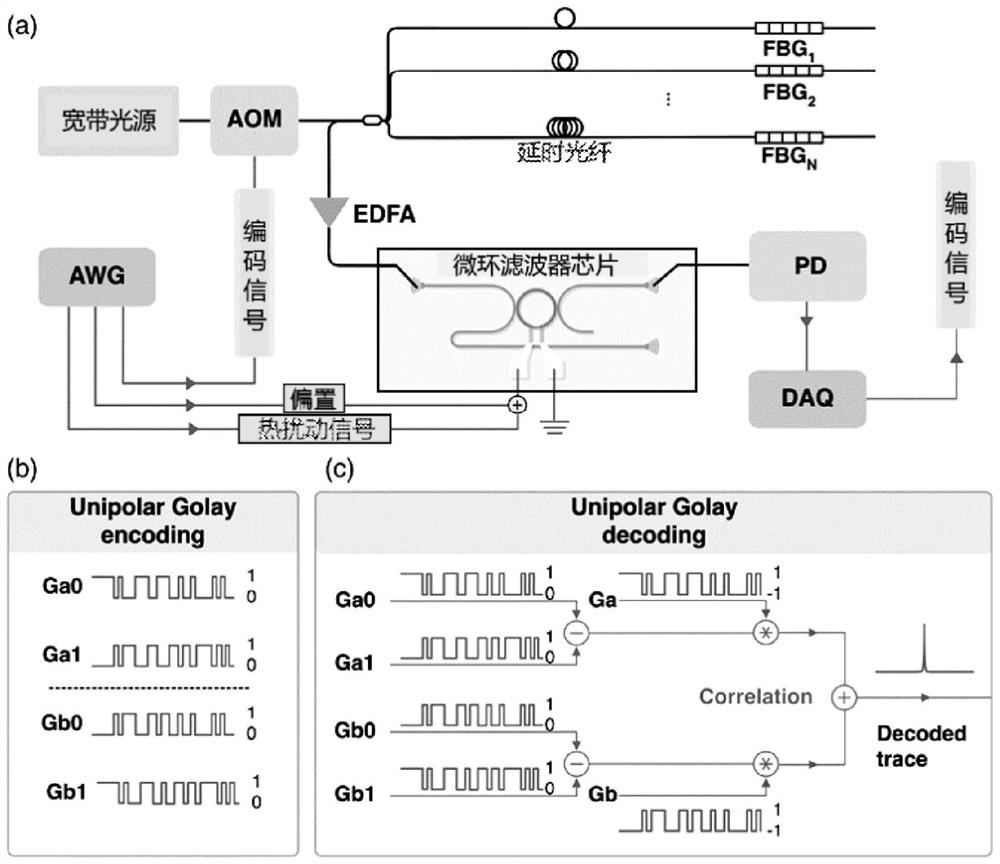Silicon-based micro-ring pulse coding time division multiplexing dynamic wavelength demodulation method
A technology of pulse coding and time division multiplexing, which is applied in the field of optical communication, and can solve the problems that dynamic testing cannot be realized.
- Summary
- Abstract
- Description
- Claims
- Application Information
AI Technical Summary
Problems solved by technology
Method used
Image
Examples
Embodiment Construction
[0023] Such as figure 1 As shown, this embodiment relates to a pulse compression time-division multiplexing system based on optical pulse coding, including: a broadband coded optical pulse generation unit, an integrated demodulation unit, and a first FBG connected to it through the first optical fiber L1 It is connected to the second FBG through the delay fiber L3, wherein: the original wide-spectrum light source coded pulse is split by the fiber coupler and then input to the FBG sensors of different channels, and the delay fiber adds a delay to the reflected signal of the second FBG, and the fiber The coupler feeds the reflected pulse into a microring filter-based demodulation system.
[0024] The parameters of the first FBG and the second FBG are the same, and different time delays are realized through the time-delay optical fiber; as shown in the figure: after the reflected encoding pulses of the two FBG sensors are transmitted through the time-delay optical fibers of diffe...
PUM
 Login to View More
Login to View More Abstract
Description
Claims
Application Information
 Login to View More
Login to View More - R&D
- Intellectual Property
- Life Sciences
- Materials
- Tech Scout
- Unparalleled Data Quality
- Higher Quality Content
- 60% Fewer Hallucinations
Browse by: Latest US Patents, China's latest patents, Technical Efficacy Thesaurus, Application Domain, Technology Topic, Popular Technical Reports.
© 2025 PatSnap. All rights reserved.Legal|Privacy policy|Modern Slavery Act Transparency Statement|Sitemap|About US| Contact US: help@patsnap.com



